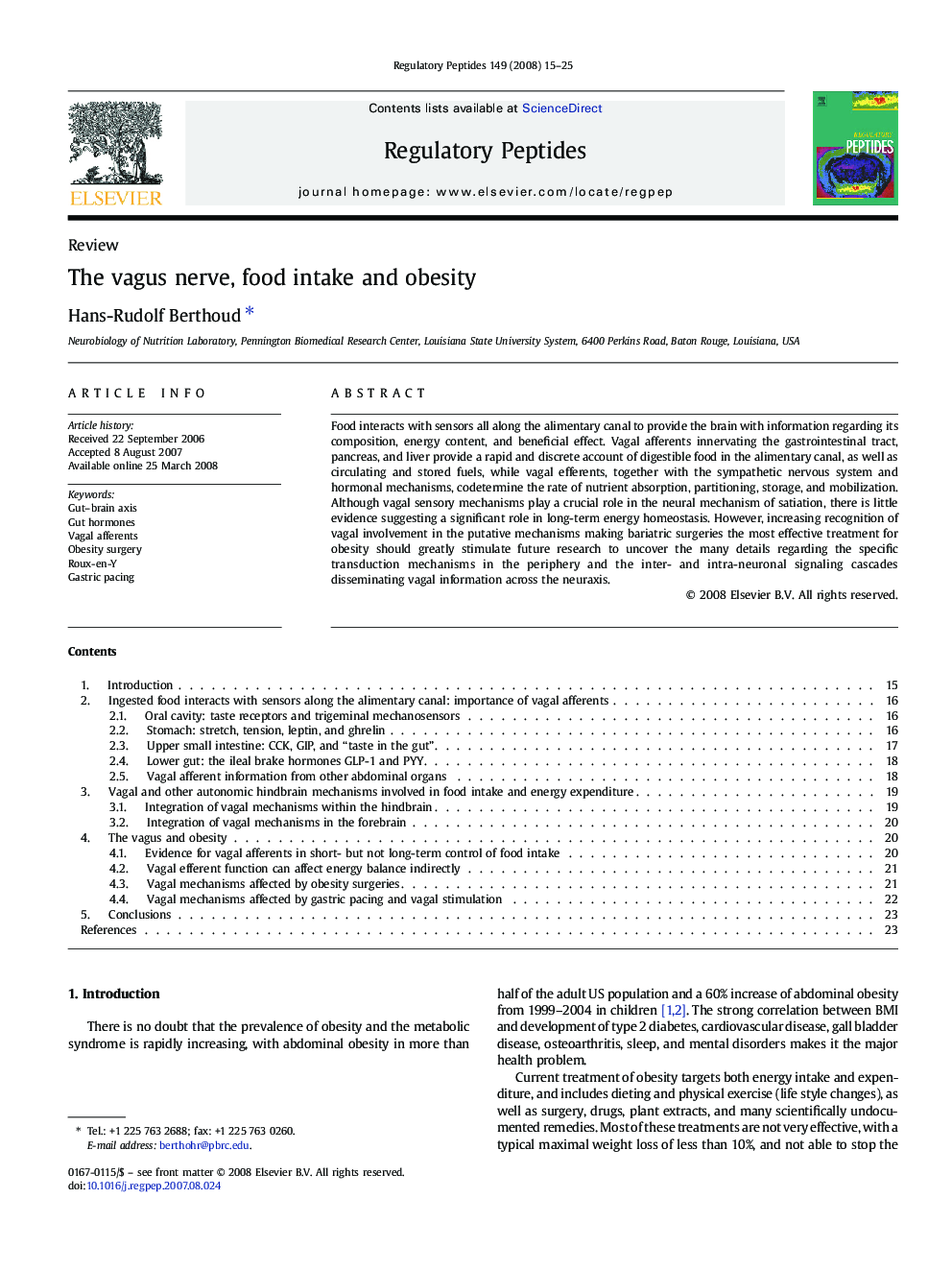| Article ID | Journal | Published Year | Pages | File Type |
|---|---|---|---|---|
| 2023131 | Regulatory Peptides | 2008 | 11 Pages |
Food interacts with sensors all along the alimentary canal to provide the brain with information regarding its composition, energy content, and beneficial effect. Vagal afferents innervating the gastrointestinal tract, pancreas, and liver provide a rapid and discrete account of digestible food in the alimentary canal, as well as circulating and stored fuels, while vagal efferents, together with the sympathetic nervous system and hormonal mechanisms, codetermine the rate of nutrient absorption, partitioning, storage, and mobilization. Although vagal sensory mechanisms play a crucial role in the neural mechanism of satiation, there is little evidence suggesting a significant role in long-term energy homeostasis. However, increasing recognition of vagal involvement in the putative mechanisms making bariatric surgeries the most effective treatment for obesity should greatly stimulate future research to uncover the many details regarding the specific transduction mechanisms in the periphery and the inter- and intra-neuronal signaling cascades disseminating vagal information across the neuraxis.
